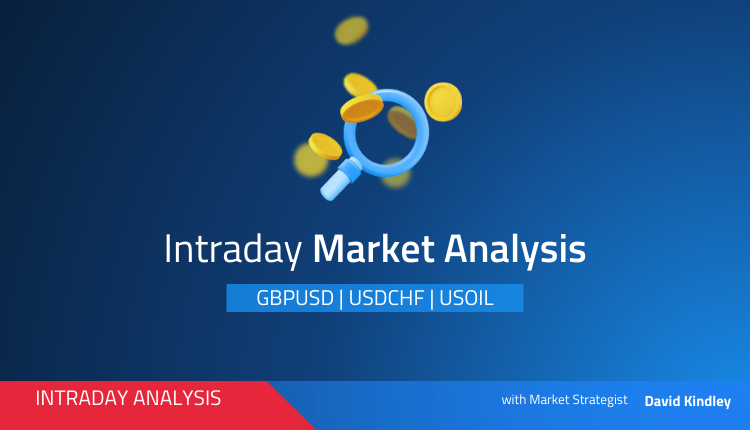The post What Portfolio Margin Is and How It Works: An Overview by Dan Schmidt appeared first on Benzinga. Visit Benzinga to get more great content like this.
Using portfolio margin to buy stocks amplifies your potential gains and losses. You can get more mileage out of your cash position, but due to its high leverage, portfolio margin isn’t the best choice for beginners. Your portfolio margin depends on the risk factor of your assets. Understanding how portfolio margin works can help you decide if it makes sense for your portfolio.
What Is Margin Portfolio?
Portfolio margin is a method of calculating margin requirements for qualified accounts that uses a risk based calculation to net all the positions in an account including derivatives. Implied volatility, hedges, asset performance, and theoretical price changes impact how much margin you can access. Brokers will let you know how much money you can borrow for additional investments.
The Differences Between Regulation T Margin and Portfolio Margin
Portfolio margin can help investors tap into a 15% margin requirement. (i.e., approximately $6 for every dollar), while Regulation T margin limits investors to 50% of the total purchase price (i.e., $0.50 for every $1). Portfolio margin has more upside but also increases your risk.
Regulation T and Portfolio Margin also have different minimum equity requirements. You can get started with Regulation T margin with as little as $2,000. However, you will need at least $100,000 in account equity to get started with Portfolio Margin. Some brokers have higher minimum requirements for portfolio margin. Portfolio Margin is more difficult to access, but it gives you more leverage than Regulation T.
How Does Portfolio Margin Work?
Portfolio margin is essentially a loan against your portfolio. A larger portfolio lets you access more capital, but the broker may have you liquidate some assets to cover some of the debt if your portfolio goes too low.
You can turn your $100,000 equity position into $600,000 worth of purchasing power if your broker lets you access $6 of margin for every $1 of your own funds. If you purchase 100 shares of Stock ABC with your own funds, margin provides you with enough capital to purchase 600 shares instead. You essentially get the price movement of 500 additional shares.
This can work extremely well when the stock’s price moves in your direction, but it is also extremely risky. A 15% loss to the underlying asset can wipe out some portfolios that engage in risky levels of portfolio margin. Changes in market conditions can increase or decrease your maximum portfolio margin since it is not a fixed rate. You can always increase your margin by putting more money into your portfolio.
If you want to buy more shares with portfolio margin, you may want to consider a hedge. Hedges mitigate risk and can let you access more capital with portfolio margin than Regulation T margin.
Portfolio Margin Requirements
There are minimum portfolio margin requirements, but each broker can increase the requirements which result in variances. Many portfolio margin requirements vary for each broker, but many of them require a certain equity size, years of experience with options trading and the highest options trading level.
You will need at least $100,000 in your portfolio to qualify for portfolio margin, and even then, most brokers require a little more than that. However, Regulation T margin is more accessible. Many brokers let you get started with Regulation T Margin if you have $2,000 in your brokerage account.
Special Considerations
Portfolio margin has risks, that are higher than other investments due the exponential effect of leverage. Here are some details to consider before getting started:
- Run stress tests: You can see how your portfolio will change based on small movements. Stress tests tell you what might happen so you can anticipate risk and determine whether you are comfortable with moving forward.
- Regulation T Margin may be sufficient: You can borrow at up to 50% initial margin through a Regulation T account. This amount of margin is sufficient for some investors.
- Interest rates: Your return on investment doesn’t just depend on stock performance. Your returns have to exceed the interest rate to break even.
- Margin requirements: Brokers can adjust margin requirements based on your portfolio’s positions. Portfolios with many individual securities usually have higher margin requirements. You should monitor this requirement to ensure you don’t get involved with a margin call.
Using Leverage for Your Portfolio
Portfolio margin lets you use leverage for your portfolio. This resource can help you achieve higher returns and outperform indexes, but remember, there are no guarantees in investing and risk is always involved. You will also have to meet a higher equity requirement to get approved for portfolio margin for your brokerage account.
Frequently Asked Questions
What does portfolio margin do?
Portfolio margin lets you borrow money against your portfolio in pursuit of higher returns
Disclosures: All investing involves risk, including the potential loss of principal, and there can be no guarantee that any investing strategy will be successful. Margin trading entails greater risk, including, but not limited to, risk of loss and incurrence of margin interest debt, and is not suitable for all investors. Please assess your financial circumstances and risk tolerance before trading on margin.
Benzinga was commissioned for this article and is not affiliated with the moomoo app or it’s affiliated companies. This includes Moomoo Technologies Inc. (MTI) provider of the app and Moomoo Financial Inc. (MFI) Member FINRA/SIPC, which offers securities in the U.S. Any comments or opinions provided herein are Benzinga’s. MTI, MFI, or their affiliates do not endorse any trading strategies that may be discussed or promoted herein.
The post What Portfolio Margin Is and How It Works: An Overview by Dan Schmidt appeared first on Benzinga. Visit Benzinga to get more great content like this.





